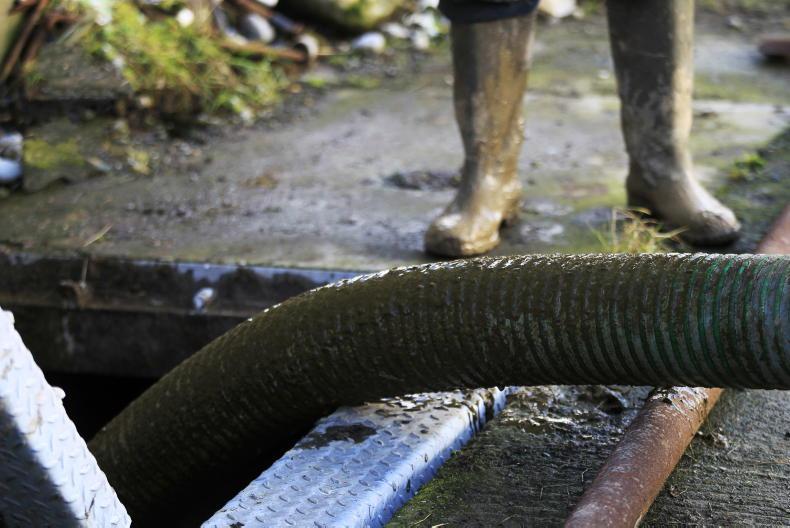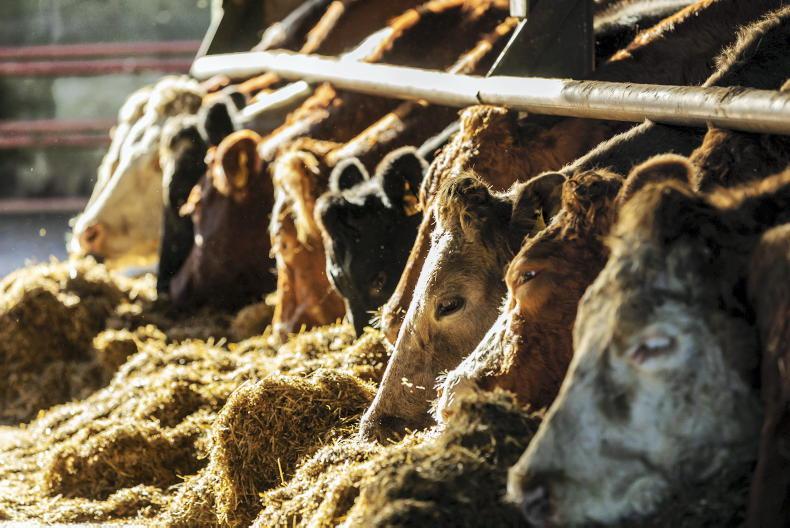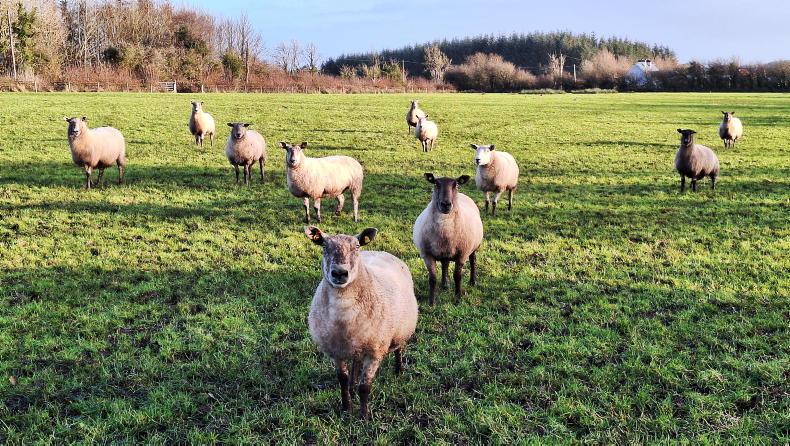February has bowed out, with it going down as the best start to grazing most farmers can remember.
Bar some wetter days in the northwest, farmers have been able to get cows out full-time from the start of calving.
Graze-outs on farms have been excellent due to the dry conditions, the slightly lower covers carried over on farms plus the volume of cows calved early, giving farmers good grazing power.
On the flip side, grass growth has remained low, with growth rates rarely exceeding the 10kg DM/ha mark and with soil temperatures set to drop to 4-6°C this week.
Some farmers may now be in the unusual position in that they have gotten through too much grass and may have to introduce silage.
The first step is to calculate the area grazed and assess how much grass and days grazing are ahead of you. At this point, the target would be to have 30% grazed with a further 30% by 17 March.
Where farmers have exceeded these targets, slowing down the rotation until growth rises would be advisable.
Depending on the level at which it needs to be slowed down, farmers can increase ration in the parlour or can hold cows inside on silage overnight or buffer feed along the barrier at milking time.
Where ground has received slurry, there is no additional requirement for chemical nitrogen to be spread, as utilisation will be low until ground temperatures increase further.
For farmers on clover swards, Teagasc would advise to treat these as normal regarding fertiliser application for the first round.
With the good ground conditions, farmers should continue to graze swards tight to ensure quality for the next rotation. The balance will be in allocation of silage and grass to ensure good utilisation while keeping cows’ stomachs full.
Calculate the percentage of the platform grazed and view alongside your current growth rate.Slow down the rotation with additional concentrates, buffer feeding silage at the barrier or housing cows at night.If ground has already received slurry, hold off on spreading chemical N until soil temperatures lift.Peter Brophy – Paulstown, Co Kilkenny
We have been grazing hard all through February while ground conditions have been good.
We have managed up until now to have virtually no damage done. So far, we have 42% of the milking platform grazed, with 80% of the cows now calved and out on grass.
Cover is lower than we would like with growth still slow, so we will go in with silage next week to slow down the rotation.
With conditions good we will try keep cows out full time and buffer feed silage at the barrier at milking.
All the milking platform has received slurry, and we will probably go with some fertiliser in 10 days’ time.
Stocking Rate (cows/ha) 2.65
Growth Rate (kg/day) 7
Average Farm Cover (kg/ha) 613
Yield (l/cow) 24.5
Fat % 4.79
Protein% 3.64
Milk Solids (kg/cow) 2.13
Supplement fed (kg/cow/day) 4
Ronan Joyce – Belcarra, Co Mayo
We are out full time now and are grazing our traditionally heavy paddocks that usually flood with no damage being done.
We would usually be on-off grazing at this stage of the year. To-date 15% of the platform has been grazed, with cows now just getting going appetite-wise. We are targeting 30% grazed by 10 March.
We are working off a 12kg allocation of grass with 4kg of meal, despite cows being below 500kg on average.
We are following cows with slurry spread via dribble bar, with 50% of the farm spread already. The remaining ground will receive 15 units of chemical N in the next week or so.
Stocking Rate (cows/ha) 2.34
Growth Rate (kg/day) 12
Average Farm Cover (kg/ha) 950
Yield (l/cow) 17
Fat % 4.92
Protein% 3.88
Milk Solids (kg/cow) 1.54
Supplement fed (kg/cow/day) 4
Caroline O’Sullivan – Teagasc Curtins, Co Cork
Conditions are ideal, with cows out day and night on our grass clover trial. We have 35% of the milking platform grazed, although we felt we had more than this.
We had been hitting some of the heavier covers the last while to slow down the rotation.
We had 50 of the current 108 cows calved, which gave us good grazing power and allowed us to graze these paddocks.
Cows are still on 12-hour allocations, with 13kg/cow of grass allocated, although we may increase this in the next week as cows have regained their appetite well. Slurry is going on grazed paddocks at 2,000/gallons per acre.
Stocking Rate (cows/ha) 1.71
Growth Rate (kg/day) 15
Average Farm Cover (kg/ha) 765
Yield (l/cow) 22
Fat % 5.25
Protein% 3.67
Milk Solids (kg/cow) 2.02
Supplement fed (kg/cow/day) 4
February has bowed out, with it going down as the best start to grazing most farmers can remember.
Bar some wetter days in the northwest, farmers have been able to get cows out full-time from the start of calving.
Graze-outs on farms have been excellent due to the dry conditions, the slightly lower covers carried over on farms plus the volume of cows calved early, giving farmers good grazing power.
On the flip side, grass growth has remained low, with growth rates rarely exceeding the 10kg DM/ha mark and with soil temperatures set to drop to 4-6°C this week.
Some farmers may now be in the unusual position in that they have gotten through too much grass and may have to introduce silage.
The first step is to calculate the area grazed and assess how much grass and days grazing are ahead of you. At this point, the target would be to have 30% grazed with a further 30% by 17 March.
Where farmers have exceeded these targets, slowing down the rotation until growth rises would be advisable.
Depending on the level at which it needs to be slowed down, farmers can increase ration in the parlour or can hold cows inside on silage overnight or buffer feed along the barrier at milking time.
Where ground has received slurry, there is no additional requirement for chemical nitrogen to be spread, as utilisation will be low until ground temperatures increase further.
For farmers on clover swards, Teagasc would advise to treat these as normal regarding fertiliser application for the first round.
With the good ground conditions, farmers should continue to graze swards tight to ensure quality for the next rotation. The balance will be in allocation of silage and grass to ensure good utilisation while keeping cows’ stomachs full.
Calculate the percentage of the platform grazed and view alongside your current growth rate.Slow down the rotation with additional concentrates, buffer feeding silage at the barrier or housing cows at night.If ground has already received slurry, hold off on spreading chemical N until soil temperatures lift.Peter Brophy – Paulstown, Co Kilkenny
We have been grazing hard all through February while ground conditions have been good.
We have managed up until now to have virtually no damage done. So far, we have 42% of the milking platform grazed, with 80% of the cows now calved and out on grass.
Cover is lower than we would like with growth still slow, so we will go in with silage next week to slow down the rotation.
With conditions good we will try keep cows out full time and buffer feed silage at the barrier at milking.
All the milking platform has received slurry, and we will probably go with some fertiliser in 10 days’ time.
Stocking Rate (cows/ha) 2.65
Growth Rate (kg/day) 7
Average Farm Cover (kg/ha) 613
Yield (l/cow) 24.5
Fat % 4.79
Protein% 3.64
Milk Solids (kg/cow) 2.13
Supplement fed (kg/cow/day) 4
Ronan Joyce – Belcarra, Co Mayo
We are out full time now and are grazing our traditionally heavy paddocks that usually flood with no damage being done.
We would usually be on-off grazing at this stage of the year. To-date 15% of the platform has been grazed, with cows now just getting going appetite-wise. We are targeting 30% grazed by 10 March.
We are working off a 12kg allocation of grass with 4kg of meal, despite cows being below 500kg on average.
We are following cows with slurry spread via dribble bar, with 50% of the farm spread already. The remaining ground will receive 15 units of chemical N in the next week or so.
Stocking Rate (cows/ha) 2.34
Growth Rate (kg/day) 12
Average Farm Cover (kg/ha) 950
Yield (l/cow) 17
Fat % 4.92
Protein% 3.88
Milk Solids (kg/cow) 1.54
Supplement fed (kg/cow/day) 4
Caroline O’Sullivan – Teagasc Curtins, Co Cork
Conditions are ideal, with cows out day and night on our grass clover trial. We have 35% of the milking platform grazed, although we felt we had more than this.
We had been hitting some of the heavier covers the last while to slow down the rotation.
We had 50 of the current 108 cows calved, which gave us good grazing power and allowed us to graze these paddocks.
Cows are still on 12-hour allocations, with 13kg/cow of grass allocated, although we may increase this in the next week as cows have regained their appetite well. Slurry is going on grazed paddocks at 2,000/gallons per acre.
Stocking Rate (cows/ha) 1.71
Growth Rate (kg/day) 15
Average Farm Cover (kg/ha) 765
Yield (l/cow) 22
Fat % 5.25
Protein% 3.67
Milk Solids (kg/cow) 2.02
Supplement fed (kg/cow/day) 4










SHARING OPTIONS